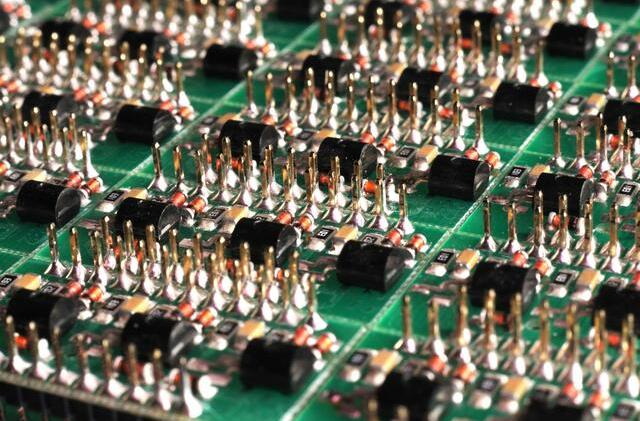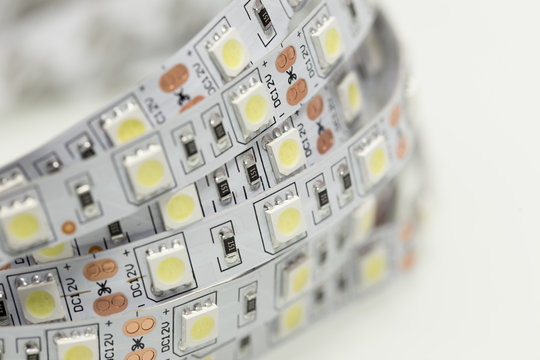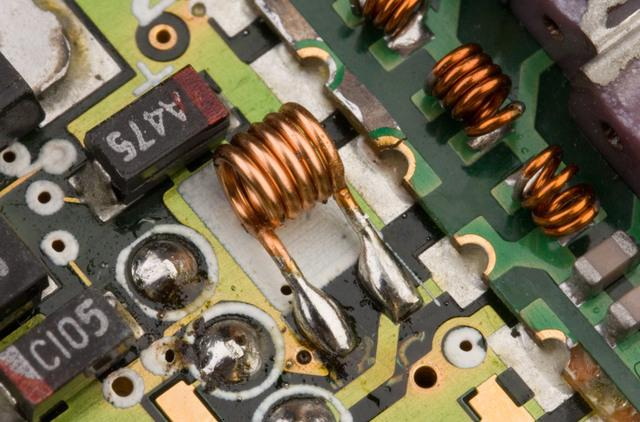Content Menu
● Understanding the Dual SMT Production Line Layout
● Key Considerations for Optimizing Dual SMT Line Layouts
>> Material Flow
>> Space Utilization
>> Machine Placement
>> Ergonomics
● Types of Dual SMT Line Layouts
● Implementing Lean Manufacturing Principles
>> Continuous Improvement Strategies
● Integrating Automation
>> Simulation Tools
● Addressing Bottlenecks in Dual SMT Lines
● Best Practices for Dual SMT Line Optimization
● Advanced Technologies in Dual SMT Production Lines
● Conclusion
● FAQ
>> 1. What are the key components of a dual SMT production line?
>> 2. How does machine placement affect productivity in a dual SMT layout?
>> 3. What is lean manufacturing in relation to dual SMT lines?
>> 4. Why is ergonomics important in a dual SMT layout?
>> 5. How can simulation tools help in optimizing a dual SMT layout?
● Citations:
In the competitive landscape of electronics manufacturing, optimizing a dual Surface Mount Technology (SMT) production line layout is crucial for achieving maximum efficiency and productivity. The dual SMT production line layout allows manufacturers to increase throughput without requiring additional floor space, making it an attractive option for high-volume production environments. This article will explore various strategies and best practices for optimizing a dual SMT production line layout, ensuring that manufacturing processes run smoothly and effectively.

Understanding the Dual SMT Production Line Layout
A dual SMT production line consists of two parallel lines that allow for simultaneous processing of printed circuit boards (PCBs). This configuration can significantly enhance production capacity and flexibility. The key components of a dual SMT line include:
- Stencil Printers: Used to apply solder paste onto PCBs.
- Pick-and-Place Machines: Responsible for placing electronic components onto the soldered areas of the PCB.
- Reflow Ovens: Used to heat the PCB and solder paste, creating reliable solder joints.
- Inspection Systems: Ensure that the assembled boards meet quality standards.
Understanding the function of each component is essential for optimizing the overall layout.
Key Considerations for Optimizing Dual SMT Line Layouts
Optimizing a dual SMT production line layout involves several critical considerations:
Material Flow
A well-designed layout ensures a smooth, uninterrupted flow of materials through the SMT line. Machines should be arranged in a logical sequence that follows the natural workflow of the assembly process. This minimizes delays and bottlenecks, which can impede productivity.
Space Utilization
Efficient space utilization is vital for an effective dual SMT line layout. Manufacturers should consider available floor space and plan the arrangement of machines accordingly. Ensuring adequate room for operators to move freely and perform maintenance tasks without obstructing production flow is essential.
Machine Placement
Strategically positioning machines is crucial for optimizing productivity. Machines should be arranged to minimize excessive movement of PCBs and reduce the risk of damage or misalignment. For instance, placing the stencil printer at the beginning of the line, followed by pick-and-place machines, reflow ovens, and inspection systems, helps maintain an efficient workflow.
Ergonomics
Operator comfort should not be overlooked in SMT line design. Workstations should be designed with ergonomics in mind to reduce strain and enhance efficiency. Proper lighting, ventilation, and clearly marked emergency exits are essential for creating a safe working environment.
Types of Dual SMT Line Layouts
Different types of dual SMT line layouts can be employed based on specific production requirements:
- In-line Layout: Machines are arranged in a straight line; ideal for high-volume production but less flexible.
- U-Shaped Layout: Provides flexibility and good visibility; suitable for varying board sizes.
- L-Shaped Layout: Efficient use of limited space; good for high production volumes.
- Cellular Layout: Configured into cells for specific operations; ideal for customized or low-volume productions.
- Dual Lane Layout: Two parallel lines increase throughput; effective for high-volume production.
Choosing the right layout depends on factors such as production volume, product variety, and available space.
Implementing Lean Manufacturing Principles
Applying lean manufacturing principles can further optimize your dual SMT production line layout by minimizing waste and improving overall efficiency. Techniques such as value stream mapping can help identify inefficiencies in the process, while methodologies like 5S (Sort, Set in order, Shine, Standardize, Sustain) streamline operations.
Continuous Improvement Strategies
Optimizing a dual SMT production line is not a one-time task but an ongoing process of continuous improvement. Regularly reviewing performance metrics can help identify areas for enhancement. Engaging operators in feedback loops allows for practical insights into potential improvements based on their experiences on the floor.

Integrating Automation
Integrating automation into your dual SMT production line can significantly enhance efficiency. Automated systems like conveyors streamline material handling, while advanced inspection technologies improve quality control processes.
Simulation Tools
Utilizing simulation tools can provide valuable insights when designing and optimizing dual SMT line layouts. These tools allow manufacturers to create virtual models of their production lines and simulate different scenarios to evaluate their impact on performance before implementation.
Addressing Bottlenecks in Dual SMT Lines
Every dual SMT line contains potential bottlenecks that can restrict throughput. Identifying these bottlenecks is critical to planning effective upgrades:
- Mounting Bottleneck: When component mounting is the process restricting line performance, upgrading the mounting capacity may be necessary.
- Reflow Process Bottleneck: If another process causes delays, increasing component-placement performance could be ineffective.
Addressing these bottlenecks involves analyzing cycle times across different processes to pinpoint where improvements can be made.
Best Practices for Dual SMT Line Optimization
To maximize efficiency in your dual SMT production lines, consider implementing these best practices:
- Component Sequencing: Arrange components in the order they are placed on the PCB to reduce machine setup time and improve overall throughput.
- Feeder Management: Maintain well-organized and properly stocked feeders to minimize changeover time and component shortages.
- Workflow Design: Optimize workflow layouts to minimize material handling, reduce operator movement, and enhance overall efficiency.
- Continuous Monitoring: Implement real-time monitoring and data analytics to identify bottlenecks and make data-driven decisions for process improvement.
Advanced Technologies in Dual SMT Production Lines
The evolution of technology has introduced advanced machinery that significantly enhances productivity:
- Automated Optical Inspection (AOI): This technology allows for real-time inspection during assembly, ensuring defects are caught early in the process.
- Machine Learning Algorithms: These algorithms can analyze historical data to predict maintenance needs and optimize machine settings automatically.
- Flexible Manufacturing Systems (FMS): FMS allows manufacturers to quickly adapt their production lines to accommodate different products without extensive reconfiguration.
Conclusion
Optimizing a dual SMT production line layout is essential for maximizing efficiency and productivity in electronics manufacturing. By carefully considering factors such as material flow, space utilization, machine placement, ergonomics, automation integration, and lean principles, manufacturers can create a streamlined assembly process that enhances both output quality and operational effectiveness. As technology continues to evolve, staying informed about advancements in SMT machinery and techniques will further aid in maintaining an efficient production environment. Ultimately, a well-designed SMT production line not only meets current demands but also adapts to future challenges in the ever-changing landscape of electronics manufacturing.

FAQ
1. What are the key components of a dual SMT production line?
The key components include stencil printers, pick-and-place machines, reflow ovens, and inspection systems that work together to assemble electronic components onto PCBs.
2. How does machine placement affect productivity in a dual SMT layout?
Strategic machine placement minimizes movement between processes, reduces delays caused by bottlenecks, and ensures that operators can work efficiently without obstruction.
3. What is lean manufacturing in relation to dual SMT lines?
Lean manufacturing focuses on minimizing waste while maximizing productivity through techniques like value stream mapping and 5S methodologies tailored to streamline operations within dual SMT lines.
4. Why is ergonomics important in a dual SMT layout?
Ergonomics enhances operator comfort by designing workstations that reduce strain during tasks, thereby improving overall efficiency and safety within the manufacturing environment.
5. How can simulation tools help in optimizing a dual SMT layout?
Simulation tools allow manufacturers to create virtual models of their production lines to evaluate different scenarios' impacts on performance before implementation, aiding in effective design decisions.
Citations:
[1] https://www.gssmt-parts.com/how-to-optimize-your-smt-production-line-layout.html
[2] https://txjpcb.com/the-best-practices-for-smt-line-balancing-and-optimization/
[3] https://www.smtfactory.com/Optimizing-Efficiency-Strategies-for-A-Smooth-SMT-Line-Production-Process-id47463586.html
[4] https://blogs.sw.siemens.com/valor-dfm-solutions/how-to-optimize-pcb-design-for-the-smt-assembly-process-flow/
[5] https://core-emt.com/blog/smt-news-1/identifying-addressing-smt-line-bottlenecks-to-plan-line-upgrades-smartly-119
[6] https://www.adoptsmt.com/en/efficiency-enhancement-in-smt-manufacturing/
[7] https://smt.yamaha-motor-robotics.de/boosting-smt-throughput-with-single-and-dual-lane-upgrades/
[8] https://www.linkedin.com/pulse/perfect-layout-analysis-design-smt-electronics-factory-mia-feng-vxw6c
[9] https://www.smtfactory.com/Perfecting-Your-SMT-Line-Layout-for-Efficiency-id47017676.html
[10] https://core-emt.com/blog/smt-news-1/dual-lane-smt-manufacturing-innovations-boost-output-and-flexibility-105




















